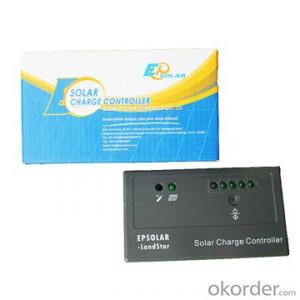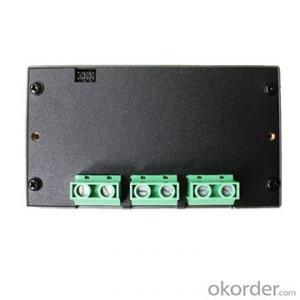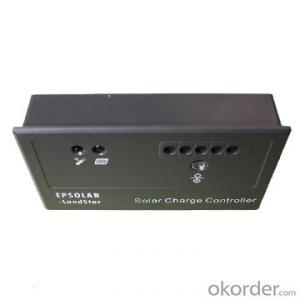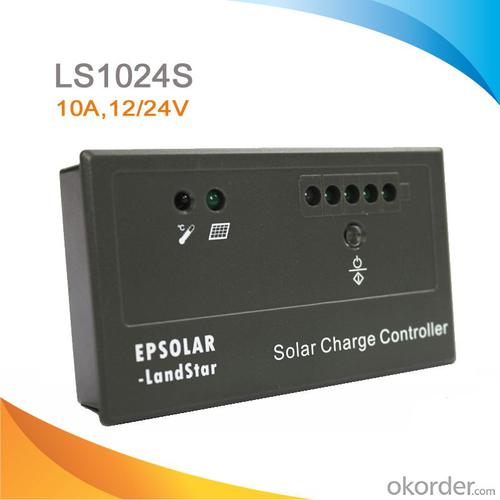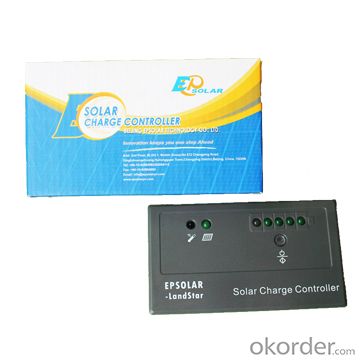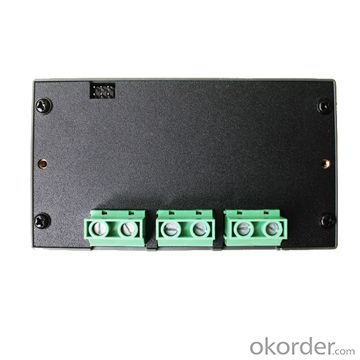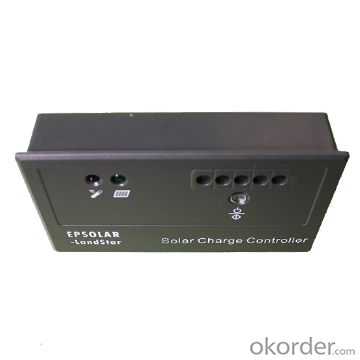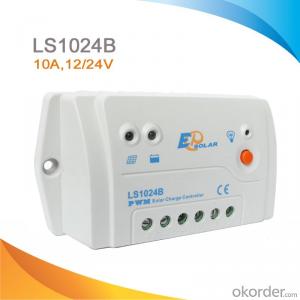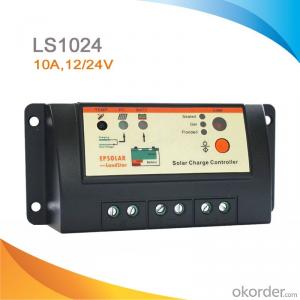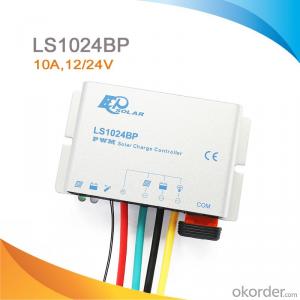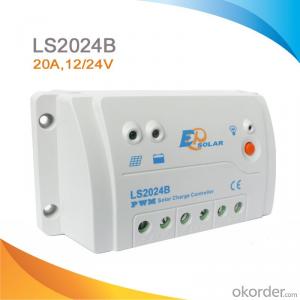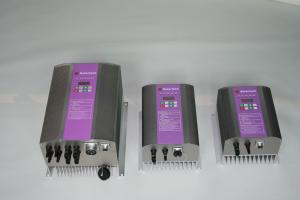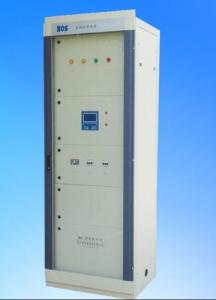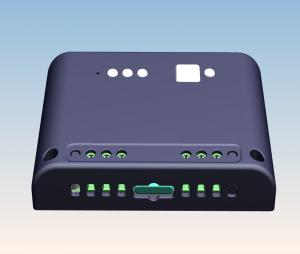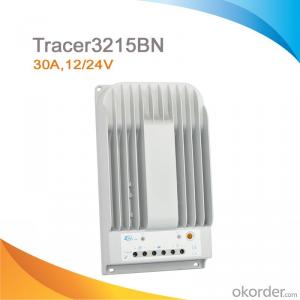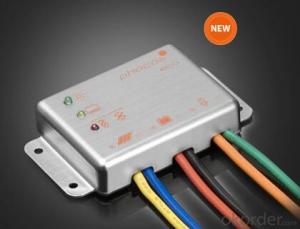Sku 1052971982 Surface Mounting PWM Solar Panel Charge Regulator/Controller, 10A, 12V/24V, LS1024S
- Loading Port:
- Tianjin
- Payment Terms:
- TT or LC
- Min Order Qty:
- -
- Supply Capability:
- 10000 pc/month
OKorder Service Pledge
OKorder Financial Service
You Might Also Like
Features:
·High efficient Series PWM charging
·Use MOSFET as electronic switch
·Gel, Sealed and Flooded battery type option
·Temperature compensation
·LED indicators indicate battery voltage state
Electronic Protections:
·over charging
·over discharging
·overload
·short circuit
·Reverse protection for battery
Specification:
Electrical parameters | LS1024S | LS2024S |
Nominal System Voltage | 12 / 24VDC auto work | |
Rated Battery Current | 10A | 20A |
Max. Battery Voltage | 32V | |
Charge Circuit Voltage Drop | ≤0.26V | |
Discharge Circuit Voltage Drop | ≤0.15V | |
Self-consumption | ≤6mA | |
Overall dimension | 120 x 68 x 40mm | 128 x 87x 48mm |
Terminal | 4mm2 | 10mm2 |
Net weight | 0.15kg | 0.25kg |
Working temperature | -35℃ to +55℃ | |
Battery Voltage Parameters (temperature at 25℃) | |||
Battery charging setting | Gel | Sealed | Flooded |
Equalize Charging Voltage | —— | 14.6V;x2/24V | 14.8V;x2/24V |
Boost Charging Voltage | 14.2V;x2/24V | 14.4V;x2/24V | 14.6V;x2/24V |
Float Charging Voltage | 13.8V;x2/24V | 13.8V;x2/24V | 13.8V;x2/24V |
Low Voltage Reconnect Voltage | 12.6V;x2/24V | 12.6V;x2/24V | 12.6V;x2/24V |
Low Voltage Disconnect Voltage | 11.1V;x2/24V | 11.1V;x2/24V | 11.1V;x2/24V |
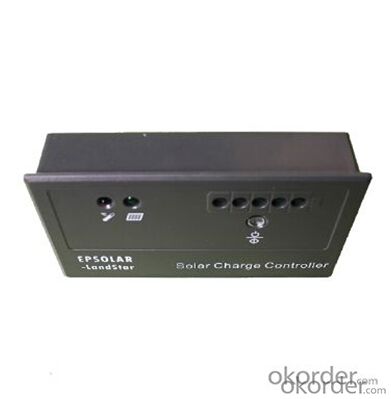
FAQ:
Q1. What is the voltage?
A1. Our 45/60A solar charge controller is 12/24/36/48V auto work.
Q2. What is the difference between MPPT&PWM?
A2. MPPT has higher efficiency, it can track the max power point and won't waste energy.
Q3. What is the efficiency of the MPPT controller?
A3. MPPT>99%, peak conversion efficiency>98%.
Q4. What is the waranty of product?
A4. 12 months.
Q5. What protection does your MPPT controller have?
A5. PV array short circuit, PV reverse polarity, Battery reverse polarity, Over charging, Output short circuit.
- Q: What is the maximum number of solar panels that a solar controller can handle?
- The maximum number of solar panels that a solar controller can handle depends on the specifications and capabilities of the controller itself. The capacity of a solar controller is typically defined by its maximum input voltage and current rating. Solar panels generate electricity in the form of direct current (DC), and a solar controller is responsible for regulating and optimizing the flow of this DC power to charge a battery bank or supply an electrical load. The controller must be able to handle the voltage and current produced by the connected solar panels without exceeding its own limits. Therefore, to determine the maximum number of solar panels a controller can handle, one needs to consider the voltage and current ratings of the solar panels and compare them to the controller's specifications. By dividing the maximum input voltage and current rating of the controller by the corresponding values of the solar panels, one can estimate the maximum number of panels that can be safely connected. It is important to note that exceeding the maximum capacity of a solar controller can lead to performance issues, such as reduced efficiency, overheating, or even damage to the controller. Therefore, it is crucial to carefully check the controller's specifications and ensure that the total voltage and current of the connected solar panels do not exceed its limits for reliable and safe operation.
- Q: Can a solar controller handle different battery types (e.g., lead-acid, lithium)?
- Yes, a solar controller can handle different battery types such as lead-acid and lithium. Many modern solar controllers are designed to be compatible with various battery chemistries and provide appropriate charging profiles based on the specific battery type. This ensures optimal charging and protection for the batteries, regardless of whether they are lead-acid or lithium.
- Q: What is the maximum distance between the solar panel and the solar controller?
- The maximum distance that can be maintained between the solar panel and the solar controller relies on several factors, including the wiring type, voltage drop across the span, and the unique specifications of the panel and controller in use. Typically, it is advised to keep this distance as short as feasible to reduce voltage drop and guarantee effective energy transmission. Nevertheless, in the majority of instances, a maximum distance of roughly 100 feet (30 meters) is deemed appropriate for low-voltage solar systems. To ascertain the optimal distance for your particular setup, it is always advisable to refer to the manufacturer's guidelines or consult with a professional.
- Q: Can a solar controller be used with solar-powered remote data logging systems?
- Yes, a solar controller can be used with solar-powered remote data logging systems. A solar controller helps regulate the charging and discharging of batteries in a solar power system, ensuring optimal performance and preventing overcharging or damage. This is essential for remote data logging systems that rely on solar power to operate efficiently and sustainably.
- Q: How does a solar controller handle fluctuations in solar panel output due to dust or dirt?
- A solar controller handles fluctuations in solar panel output due to dust or dirt by continuously monitoring the panel's performance and adjusting the charging parameters accordingly. It compensates for the reduced efficiency caused by dirt or dust by increasing the charging voltage or current to maintain the optimal charging level. Additionally, some advanced solar controllers also come with built-in cleaning mechanisms or alarms that notify users when the panel requires cleaning, ensuring maximum efficiency and output.
- Q: What is the temperature range in which a solar controller operates?
- The temperature range in which a solar controller operates typically varies from -40 degrees Celsius to 85 degrees Celsius.
- Q: Are there any safety precautions I should take when installing a solar controller?
- Yes, there are a few safety precautions you should take when installing a solar controller. First, ensure that the power supply to the controller is switched off before starting the installation process to avoid any electrical shocks. Additionally, it is important to follow the manufacturer's instructions and guidelines carefully to ensure proper installation and avoid any potential hazards. It is also recommended to use appropriate personal protective equipment, such as gloves and safety glasses, to protect yourself during the installation process. Lastly, if you are unsure about any aspect of the installation, it is always best to consult with a professional or seek advice from an experienced individual in the field.
- Q: How does a solar controller handle voltage drops in the system?
- A solar controller handles voltage drops in the system by regulating and maintaining a consistent voltage level. It constantly monitors the voltage and adjusts the charging parameters to compensate for any drops, ensuring that the batteries receive a steady and optimal charge.
- Q: What is the maximum load power of a solar controller?
- The maximum load power of a solar controller typically depends on the specific model and brand. It can range from a few hundred watts to several kilowatts, catering to different power requirements for various applications.
- Q: How does a solar controller prevent damage to the solar panels from power surges?
- The prevention of damage to solar panels from power surges is a crucial role played by a solar controller. By acting as a protective barrier between the panels and the electrical system, it ensures a safe and steady flow of electricity to the panels. Solar panels have the primary function of converting sunlight into electricity, but they are vulnerable to damage caused by power surges or fluctuations in the electrical current. These surges can arise from lightning strikes, fluctuations in the utility grid, or even faulty wiring within the system. To safeguard the solar panels, a solar controller is equipped with various protective mechanisms. One of its key features is the regulation of voltage and current flowing from the panels. Constantly monitoring the electrical output, it adjusts the voltage and current to match the requirements of the battery or electrical load. This prevents the panels from being exposed to excessive voltage or current that could potentially harm them. Moreover, solar controllers often incorporate built-in surge protection devices, like transient voltage suppressors (TVS) or metal oxide varistors (MOV). These devices divert excess voltage or current away from the panels during power surges, effectively absorbing the surplus energy and preventing it from reaching the panels. This helps in safeguarding not only the panels but also other components of the solar system. Additionally, solar controllers include features such as reverse polarity protection, short-circuit protection, and overcharge protection. These safety measures ensure that the solar panels remain undamaged in the event of accidental wiring errors, system faults, or overcharging situations. In conclusion, a solar controller plays a crucial role in preventing damage to solar panels from power surges. By regulating voltage and current, incorporating surge protection devices, and implementing various safety features, it acts as a vital safeguard for the panels, ensuring their longevity and optimal performance.
Send your message to us
Sku 1052971982 Surface Mounting PWM Solar Panel Charge Regulator/Controller, 10A, 12V/24V, LS1024S
- Loading Port:
- Tianjin
- Payment Terms:
- TT or LC
- Min Order Qty:
- -
- Supply Capability:
- 10000 pc/month
OKorder Service Pledge
OKorder Financial Service
Similar products
Hot products
Hot Searches
Related keywords

